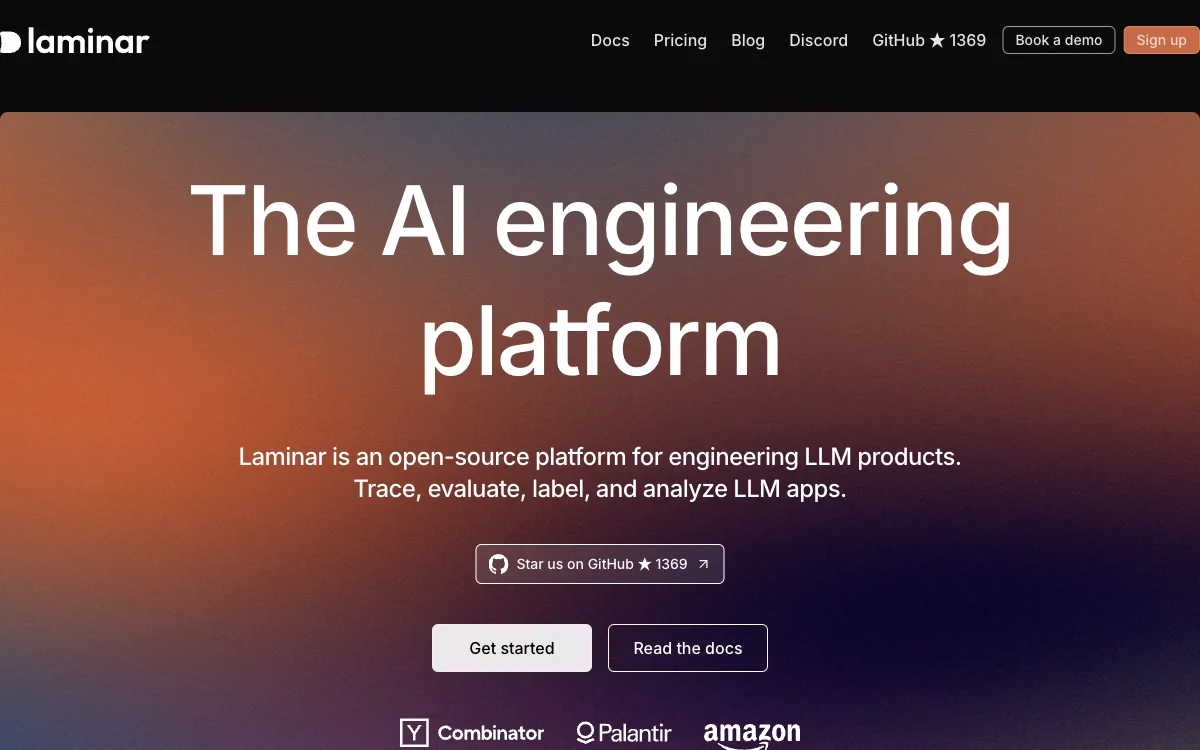Laminar stands out as a comprehensive open-source platform tailored for AI engineers working with Large Language Models (LLMs). It offers a suite of tools designed to trace, evaluate, and label LLM applications, thereby providing invaluable insights into their performance and facilitating data collection for further analysis and fine-tuning. With Laminar, engineers can effortlessly monitor LLM calls in production, assess the impact of prompt changes, and gather essential data for prompt engineering and fine-tuning processes.
One of the platform's standout features is its ability to trace LLM applications with minimal setup. By adding just two lines of code, developers can gain visibility into every execution step of their LLM applications. This not only aids in performance monitoring but also collects data that can be used for evaluations, few-shot examples, and fine-tuning. Laminar supports automatic tracing of common LLM frameworks and SDKs, and it also allows for manual tracing of any function, offering flexibility and control to the developers.
Moreover, Laminar introduces online evaluations, enabling the setup of LLM or Python online evaluators to process each received span. This feature automates the labeling of spans, making it a scalable alternative to human labeling. The platform also facilitates the creation of datasets from traces, which can be utilized in evaluations, fine-tuning, and prompt engineering, thereby streamlining the development cycle of LLM products.
For those looking to prototype and iterate on LLM pipelines, Laminar offers a serverless pipeline builder. This tool allows for the quick development and iteration of both simple prompts and complex LLM chains, enhancing the efficiency of the development process. Additionally, Laminar's commitment to being fully open-source and easy to self-host ensures that it is accessible to a wide range of users, from individual developers to large teams.
In summary, Laminar provides a robust solution for AI engineers seeking to enhance the performance and efficiency of their LLM applications. Its comprehensive suite of tools for tracing, evaluating, and labeling, combined with its open-source nature and ease of use, makes it an invaluable asset in the AI engineering toolkit.

